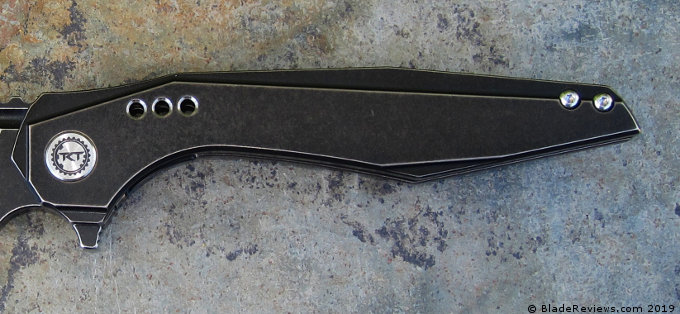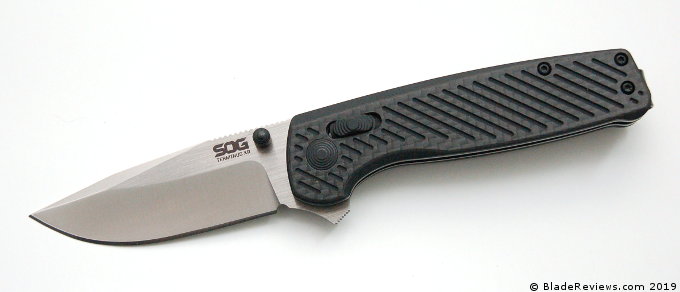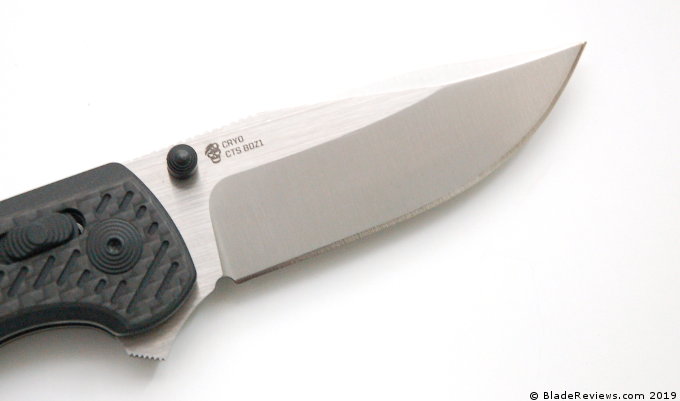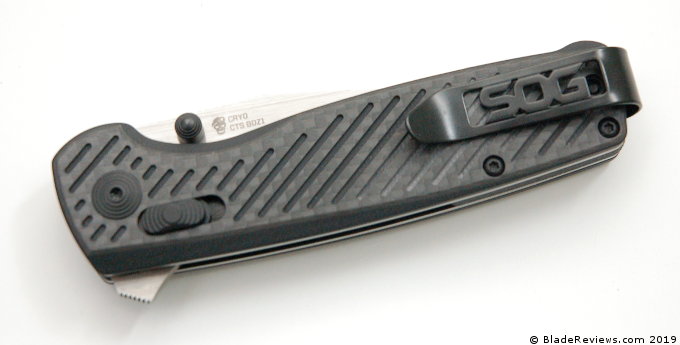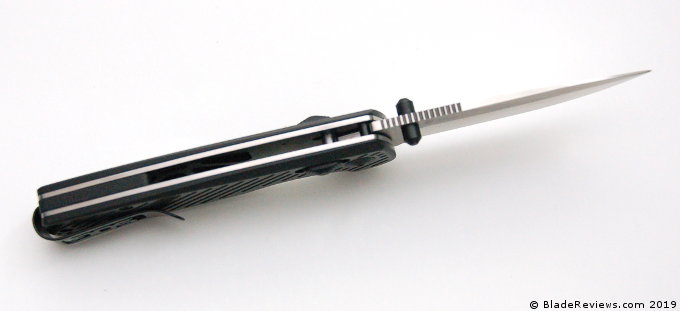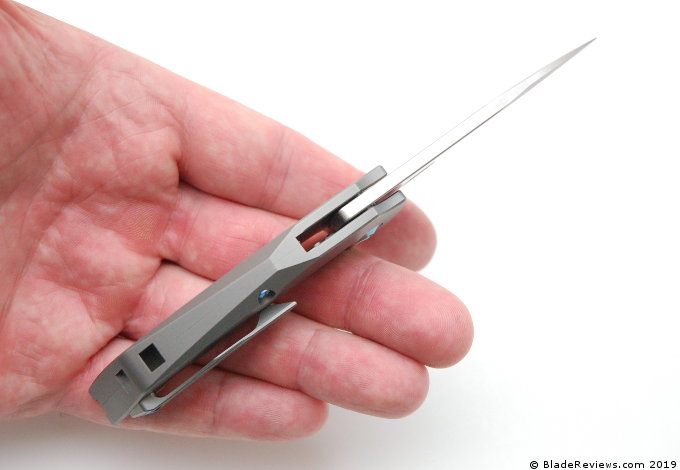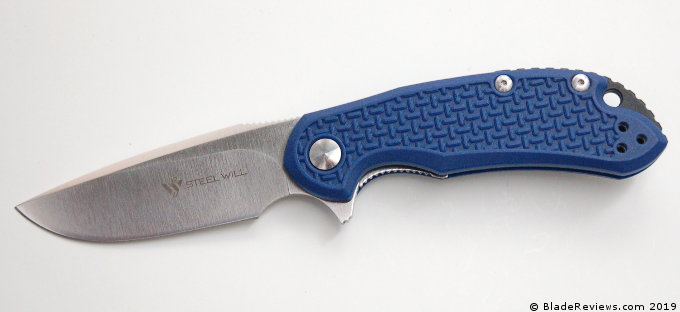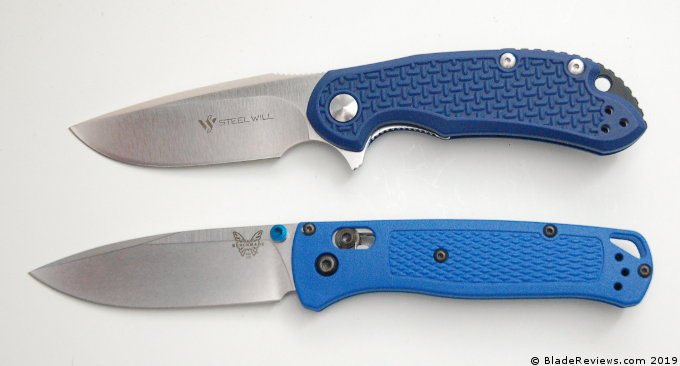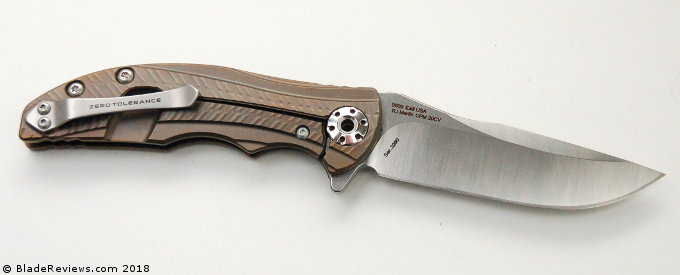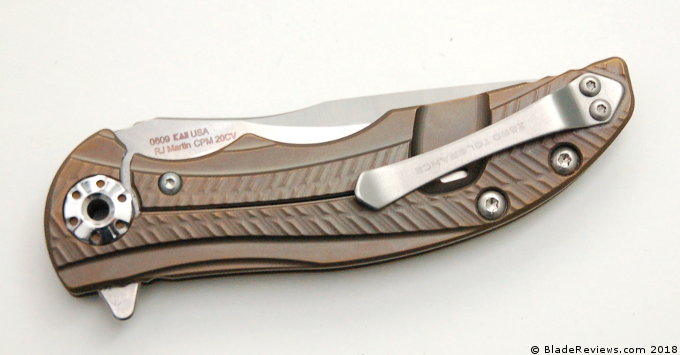Over the years, I’ve noticed that in polite society when I whip out a folding knife to open a box or cut a loose thread, most people’s reactions are some variation of “Oh God, why do you have/need/carry that?” My usual reply is that a knife is the most useful tool in the world, but I’ve found that no matter how “non-threatening” looking the knife is, I still get that same reaction. Therefore, why not carry whatever I want?
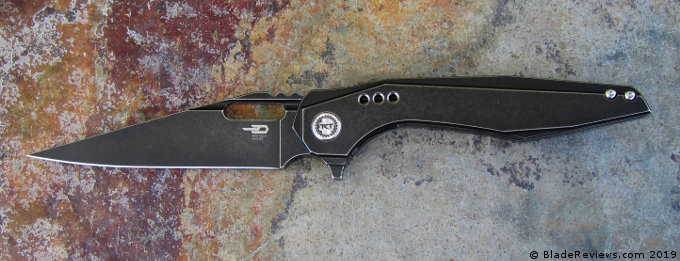
Buy the Bestech Malware at BladeHQ
So, a month ago I put down my already scary-looking Microtech Ultratech OTF switchblade and picked up the seriously murder-ey looking Bestech Malware.
The Malware was designed for Bestech Knives by Todd Knife and Tool. TKT was started in 2016 by prolific knife reviewer Teryl Todd (Zelrick42 on YouTube) and his brother Seth Todd. They went from being fans to designers, and have a thoroughly modern company. Teryl lives in Ozark, Missouri, and Seth lives in Houston, Texas. They jointly design their knives by sharing 3D CAD files online, then Seth makes physical prototypes that they both test. TKT have developed a distinct visual style also apparent in their We Knife Co. made Roxi folder, and in the many prototype images shared on the toddknifeandtool Instagram account.

General Dimensions & Blade Details
The Malware’s blade is 3.875” (9.8 cm) long, the blade stock thickness is 0.15” (3.9mm), and it’s full open length is 8.75” (22 cm). The long stabby blade folds into a titanium handle, the blade pivots on ball bearings, and it’s framelock has a steel lockbar insert. The steel lockbar insert is a theoretically replaceable part that protects the titanium framelock from rubbing against the lock face of the steel blade. My experience has been that often a titanium framelock rubbing against a steel blade tends to “stick” in place, but steel on steel doesn’t have the same problem.
Here is a size comparison with a large Sebenza Insingo:

It weighs 3.68 oz. which is technically a little more than a Spyderco Paramilitary 2 or a Chris Reeve Knives large Sebenza, but it feels lighter than either of them in the hand. I attribute this feeling to the weight balance of this knife. If I’m holding the Malware in a normal thumb-on-top grip, and I slowly open my hand, the knife will not fall to the floor, but will stay balanced on my index finger. This nearly perfect weight distribution helps the Malware feel very agile in my hand.
The titanium pocket clip is configured as a right side, tip up only, but there are dedicated left handed versions as well. I have the “Ti Black” version. The titanium backspacer and pocket clip are anodized a brassy gold color, and contrast nicely against the black stonewashed finish of the rest of the knife. The stonewashed treatment gives the edges and corners a worn-in look similar to Kershaw Knives’ “blackwash” finish.
It’s blade steel is S35VN, which was developed specifically for high-end knife blades by steelmaker Crucible Industries and Chris Reeve Knives. It’s a powdered metal steel, which has the advantage of more uniform blending of it’s elements (iron, niobium, chromium, vanadium, etc.) than conventional steel. The end-user benefits of this manufacturing process and the S35VN formula are excellent blade toughness (it can take a hit without breaking or bending), corrosion resistance, and edge retention.

So it’s a modern production knife made in China with premium materials and it’s priced accordingly at $196 on BladeHQ. What makes it different than every other new Kizer, Reate, We, and Rike knife? Style and details.
What I love about good pocketknives is that they’re pieces of functional art you can hold in your hand. The Malware is full of interesting details and I keep noticing more. The design is a strange futuristic combination of curves, straight lines, and, as on the cutting edge of the blade, straight lines that almost imperceptibly turn into curves. The blade has a finger choil which, although it’s a little too small for my index finger, is the full 3.9mm width of the blade stock, which is yet another design detail that I appreciate.
Handle, Ergonomics, & Pocket Clip
In pictures, the handle looks very thin, and in the days between ordering the Malware and receiving it, I wondered if it would be too small to properly wrap my medium-large-ish hands around. When it arrived, I found that it fills my hand very well, and the long, flat clip doesn’t create much of a hotspot any way I hold it.
Some edges are pretty squared off, like the machining on the backspacer, but almost every part of the handle that comes in contact with my hand is chamfered, making it quite comfortable to hold. And the more I have it in my hands, the more I keep discovering new functional design details that I had, at first glance, written off as being cosmetic- like the three holes in the show side near the flipper tab. Those holes are exactly where my right thumb needs traction when flipping the knife open.

On the lock side of virtually all framelock knives, there’s a machined indentation in the frame that allows the locking part of the frame to flex inward and lock the blade open. A lot of knives cover this indentation with their pocket clips, but as yet another example of how well thought out this design is, the pocket clip on the Malware sits right above, but not covering, the indentation. So when gripping the knife to flip it open, my ring finger is naturally pushed into that square indentation, which gives me a secure grip when flipping it open.

I don’t ordinarily use my pocketknives for food prep, but in the spirit of thoroughness I sliced up some veggies with it. The blade has a full flat grind and gets very thin at the bottom, which made slicing easy. The ergonomics for general food prep were fine as long as I didn’t try to spread anything- the thin blade definitely doesn’t work as a butter knife. The flipper tab extends below the cutting edge, so it can’t really be used for dicing either, but kitchen work is clearly not this knife’s intended use.

The pocket clip is rather long and thin and has more flex to it than any other milled clip I’ve handled. The good news is that it doesn’t chew up my (already chewed up) pants pockets, but the bad news is that it seems like it could easily get bent.
I carried this knife during a T.C.C.C. medic class, and when we were learning how to improvise tourniquets, I used the Malware as a windlass (the stiff piece that you twist to tighten the tourniquet.) Despite really cranking this thing down tight on my training partner’s arm, I had no fear of the knife breaking or bending until the instructor decided to show the class how to tie off the end of the improvised tourniquet using the pocket clip. He was bending the clip way out and jamming fabric under it, and I desperately wanted to ask him to stop so he didn’t break it. I resisted this urge because I didn’t want to seem like a weenie to our super-badass Los Angeles SWAT Medic instructor. So he manhandled the clip, and when he was done, it just sprung back to it’s normal state. It may be thin and flexible, but it’s not fragile.

Overall, the Malware isn’t an “overbuilt” knife like a Hinderer Knives XM or a Strider SMF, but it’s definitely tougher than it looks.
Deployment & Lockup
A gripe I have with every single framelock flipper is if I grip it in such a way that I’m putting a lot of pressure with my middle finger on the front of the lock near the pivot, then the knife becomes very difficult to flip open. The worst offender on this front that I have is a Brad Zinker midtech version of the Boker Urban Trapper. The only knife I have that is immune to this problem is my GiantMouse GM1, which is an awesome knife overall, but perhaps solves this problem by having a weak detent which makes it difficult to flip open. However, the ergonomics of the Malware naturally place my fingers where they don’t get in the way of the mechanism at all.
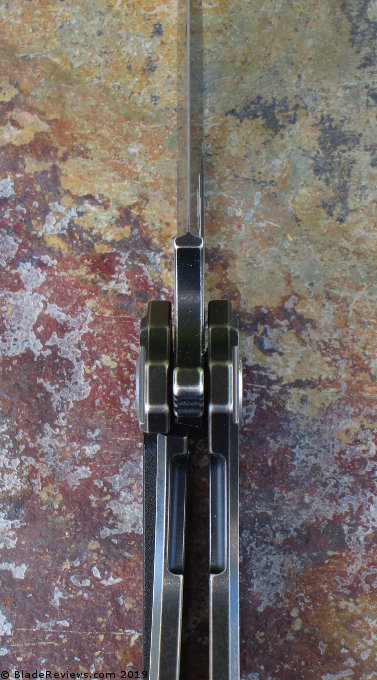
The Malware’s flipper tab is relatively small but has comfortably rounded jimping that provides good traction for flipping. The amount of detent tension that has to be overcome to flip the knife open is tough for me to objectively define- but subjectively, I think it flips perfectly. The Malware’s framelock engages at about 40%, which you can jam over to about 60% if you’re worried about it slipping (not that that’s ever happened to me or anyone I know.)
I don’t carry a knife specifically for self defense, but I must say that I certainly never felt under-prepared while carrying the Malware on the weird streets of Los Angeles. It’s never accidentally opened while in my pocket or while drawing it out of my pocket. It’s flipped and locked open securely every single time I’ve flipped it. I don’t think an especially scary-looking knife like this is going to make a bad man run away in terror, but it’s a long, mean looking blade with a big handle I can get a very firm grip on. So I’ll add self defense to the Malware’s growing list of positive attributes.
Bestech Malware Review – Final Thoughts
I carried the Malware every day for a month and primarily used it for un-challenging tasks like opening packages, slashing open bags of cat food, and as an improvised medical device. At the end of the month, the finish on blade, handle, and clip are unblemished. The S35VN blade was still very sharp in most places, but after a quick, ham-fisted touch up on a Wicked Edge sharpener, it’s back to 100%. There’s no sharpening choil, but I don’t really care if the last few millimeters of my blade are super sharp.
What is the Bestech Malware made to do? I don’t want to sound like a knife snob a-hole, but I tend to compare everything to my Chris Reeve Knives Sebenza 21. The word “Sebenza” is literally the Zulu word for “work”, and the Sebenza feels like an indestructible precision tool. The Bestech knife doesn’t feel like a tool, it feels like a blatantly offensive weapon that can also open boxes from Amazon. Malware is the perfect name for this knife because it’s so badass. Not flaming skull badass, but sci-fi villain badass. It brings to mind futuristic heavy metal music by the band Voivod, it’s like the knife version of the Space Marines’ rifle from the movie Aliens, it should be a weapon in the DOOM video games, and I obviously really like it.
The deciding factor for anyone considering buying the Malware is definitely it’s looks- if you immediately like it’s vibe, I say get it. Nothing is perfect (except kittens), but the Malware excelled at everything I wanted it to do, and looked super-murder-ey doing it. Recommended!

Bestech Knives Malware – From $196.00
From: BladeHQ
Editor: I recommend purchasing the Bestech Knives Malware at BladeHQ and Amazon. Thank you very much.
About the Author: This guest review was written by John Burridge. John lives in Los Angeles and has a deep passion for knives. I plan on adding to this section to include more info about John and where to find him. In the meantime, I hope you enjoyed this in depth review.
